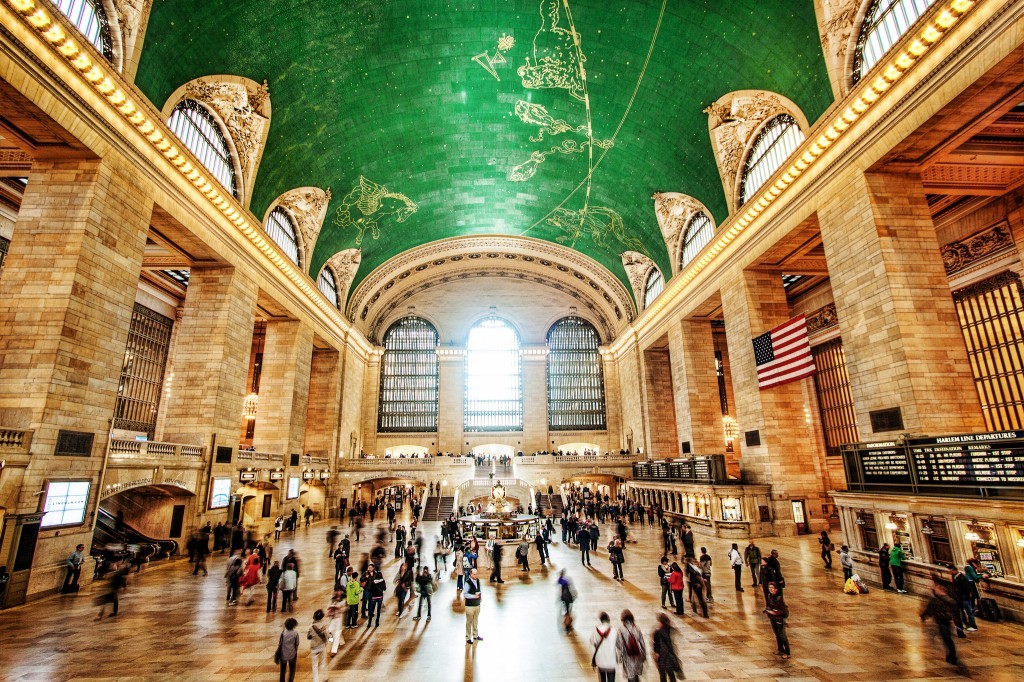Last night, Anthony Robins spoke at the Dominican Society about the history of Grand Central and about the importance of preserving the adjacent buildings that make up Terminal City as the city prepares to rezone Midtown East. Below is his post on the subject for M.A.S.
Grand Central Terminal: 100 Years of a New York Landmark
GUEST POST: Anthony W. Robins is an historian, writer and lecturer who has led MAS tours for several decades. He teaches the research skills used in writing his new book in an annual MAS seminar, being offered this year in April. To anybody who’s worked in or cared about the historic preservation movement in New York, the very name “Grand Central Terminal” has enormous significance, because it conjures the 1978 Supreme Court decision that put preservation on a solid legal footing.
By chance, I started working at the New York Landmarks Commission in January of 1979, just a few months after the Court had handed down the decision. Kent Barwick, who had guided the effort at the Municipal Art Society, had just moved over to be the LPC’s new chairman.
The general feeling was that historic preservation had passed a critical test – now it was legitimate, accepted, constitutional. The name “Grand Central” became a kind of shorthand for not just a major victory, but an entirely changed environment. What remained was the messy physical and financial reality. The terminal was a mess – dirty, deteriorating, dangerous. The main waiting room – today called Vanderbilt Hall – had become a homeless encampment. Besides being a humanitarian disaster, that encampment discouraged other New Yorkers from coming to the terminal.
With a declining rail industry unable to generate the necessary income, the terminal seemed, so to speak, terminal. Nevertheless, after years of effort, complex financing, a reimagining of the terminal as a destination for New Yorkers already in the city – rather than just a destination for travelers to the city – and an expansive restoration, Grand Central has emerged as the jewel it was always meant to be. In many ways, its transition from bankrupt decaying hulk to gloriously restored success story mirrors the evolution of the city and its physical restoration over the past thirty-five years.
The terminal’s centennial is an occasion to celebrate the survival of a major New York monument which we almost lost. As to the new book, Grand Central Terminal: 100 Years of a New York Landmark, just published by Stewart, Tabori & Chang (an imprint of Abrams) as a project of the New York Transit Museum: Being asked to write the book celebrating the centennial of Grand Central Terminal was a terrific honor. It was also a major challenge.
I’d led some of the famous MAS Wednesday Grand Central tours over the years, but quickly discovered how much there was that I didn’t know. It was an intense research and writing project, supported by the wonderful archivists at the Transit Museum (Carey Stumm and Brett Dion). Perhaps the most surprising thing I learned – though hardly a secret – was the extent of the entire surrounding district, “Terminal City.”
In the area from Forty-second Street to at least 50th Street, roughly from Madison to Lexington avenues, dozens of buildings rise above Grand Central’s sunken train yard. Terminal City initially developed with elegant masonry buildings designed either by Grand Central’s architects, Warren & Wetmore, or by architects whose proposals required W&W’s approval. The result was a visually cohesive whole – an entirely new section of Manhattan. After the war, Park Avenue redeveloped as a glass and steel International Style office park, so the feeling of visual cohesiveness has largely disappeared.
The best remaining spot to get a sense of what it looked like is along Vanderbilt Avenue where – with the exception of the refaced Biltmore Hotel – the original Terminal City buildings still stand. These, unfortunately, may be threatened by the recently proposed new zoning for east Midtown. Happily, the MAS once again is stepping into the battle.




